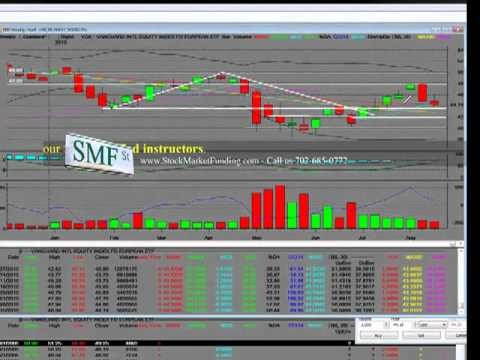ETFs And Mutual Funds Investing In Africa (MSFT GOOG AAPL XOM)
Post on: 28 Апрель, 2015 No Comment

“Invest in mutual funds,” the standard grandfatherly advice goes. Reduced risk, no overexposure, etc. It’s the responsible, conservative way to build a substantial — if unimpressive — nest egg. And judging by the size of the mutual fund market ($24 trillion worldwide), plenty of people indeed heed that counsel.
Now add the qualifier “…in Africa” and see what happens. Immediately, we’ve gotten a lot less conservative, at least in the eyes of conventional investors. Mutual funds invested in Africa? Why?
Why Not Africa?
More fittingly, why not? Africa is the ultimate collection of developing nations, their potential always seeming to outstrip their production. Now, with colonialism all but a memory, the landscape is changing. One of these decades, at least some African countries will start building globally impressive lasting wealth that benefits more than just the oligarchic class. That decade might be this decade. (For more, see: Interested in Investing in Africa? Here’s How .)
There are thousands of mutual funds and exchange-traded funds in existence, the largest of which are close to uniform in makeup and size. Every portfolio manager buys the requisite shares of Microsoft Corp. (MSFT ), of Exxon Mobil Corp. (XOM ), etc. then pats himself on the back for playing it safely. Get down to the smaller funds, the boutique funds concentrating on a particular industry or region, and you’ll find more variation. Continue going to the Africa-centric funds and…well, such funds aren’t easy to find.
The AFK ETF
More than a billion people, on a landmass three times the size of the United States, and there’s only one ETF that encompasses the entire continent (there are also three other ETFs that each focus on one of Egypt, South Africa and Nigeria, which happen to each be among the continent’s five most-populous nations). The continent-wide fund is Van Eck’s Market Vectors Africa Index ETF (AFK ). Not coincidentally, it’s invested mostly in companies headquartered in those very three countries. In fact, so heavily is the Africa Index ETF concentrated in Egypt, South African and Nigeria that the next sub-Saharan country on the list of the ETF’s holdings is Kenya at a mere 2%.
As for the Africa Index ETF’s performance, it rose throughout the course of 2012, but that movement is an anomaly over the fund’s six-year duration. It’s down 4% this year, and 3% over the course of the fund.
Remaining mutual funds centered exclusively on Africa as a whole are few and far between. They include Commonwealth’s tiny Africa fund, which was founded in 2011, has less than $2.5 million (with an “m”) in assets, and counts the Market Vectors Africa Index Fund as its biggest component. (For related reading, see: The Rise of Africa .)
Nile Funds
Which takes us to one intriguing African fund. It’s not only invested in Africa, but created by an African. New Jersey-based Nile Funds operates two funds: Pan Africa and Global Frontier, the former is invested exclusively in Africa. Nile Funds’ founder, chief investment officer, and portfolio manager Larry Seruma was born in Uganda and educated at the University of Chicago. Today, he’s among the most prominent native spokesmen for foreign investment and development on the continent that capital consistently neglects.
Nile Funds’ Pan Africa Fund, as its name entails, invests solely in African companies. Its biggest holding is United African Co. of Nigeria, a conglomerate that includes everything from restaurants to paint, to groceries. That’s followed by positions in Consolidated Infrastructure, a South African construction firm; Nigerian treasury bills; Ghanaian government bonds; Curro, a South African private school operator; Mota-Engil, a Portuguese conglomerate (but with an Angolan subsidiary believed to be weeks away from its initial public offering); Ellies, a South African manufacturer of consumer electronics accessories; and Dangote, Nigeria’s favorite maker of Portland cement. (For more, see: Profitable and Easy Ways to Invest in Africa .)
The Advantage of Being Small
There’s no Apple Inc. (AAPL ) or Google Inc. (GOOG ) on the list, which is Mr. Seruma’s point. Although large compared to the Commonwealth Africa Fund, Nile Funds’ Pan Africa Fund is still small in absolute terms, with net assets of less than $44 million. On the other hand, you can get in for $1,000. And the results have been impressive. Net asset value was $10 at the fund’s April 2010 debut, fell to the low nines the following year, and as of November 2014, sits at $14 (down from a September peak of $15).
The corporations included in these funds might not be familiar to people on the west side of the Atlantic, but they don’t necessarily need to be. A healthy balance sheet reads the same in English as it does in Igbo or Afrikaans (take a look at the components of your own mutual fund holdings, no matter how large the fund. Chances are good you won’t recognize many of the names). And what’s Ghana’s credit rating, anyway? The answer is B, at least according to Fitch. Which is somewhere between the United States and Greece, and offers the potential of greater returns to make up for greater risk. (For more, see: Sub-Saharan Africa Beckons .)
The Bottom Line
Slowly but purposefully, the majority of African countries have gravitated from despotic basket cases to functioning societies with comfortable qualities of life. More investment from people in the nations already at the top should only continue the trend. (For more, see: Why You Should Pay Attention to Africa Right Now .)














